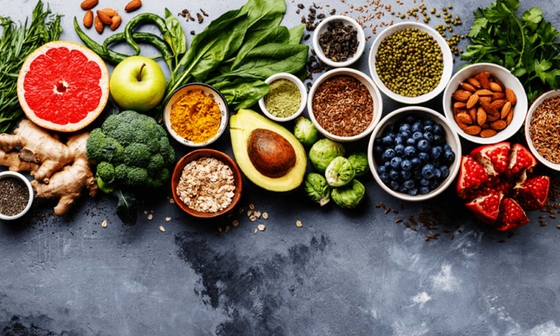
A deep dive into fish and seafood: we tackle five common questions
Blog: 13 July 2022
Yes, we’re the nation that coined the phrase ‘throw another shrimp on the barbie’ (thank you, Paul Hogan). But did you know that in terms of yearly consumption in Australia, fish comes in fourth behind chicken, pork and beef?
Given the many wonderful health benefits of fish, surely it deserves a place on the podium! Fish and seafood are great sources of protein and omega-3 fatty acids, which may lower the risk of heart attacks and dying from heart disease. They’re also jam packed with minerals like iodine, zinc, and vitamins A and D.
For all these reasons, the Heart Foundation recommends that we should aim to eat two to three serves of fish each week as part of a heart-healthy eating pattern.
Think it all sounds a bit fishy? Still need some convincing to take the bait? Read on as we answer five common questions about all things fish and seafood.
1. How can I make my fish and chips healthier?
Can you think of a more iconic Australian take away option? You’ve probably got memories of sitting on the beach or in the park on a warm night, seagulls lingering, ripping open a warm paper-wrapped package. Take away fish and chips are definitely a ‘sometimes only’ meal, so here are some top tips for making your next order a little healthier for your heart:
Opt for grilled fish instead of fried.
Cut down on some of the ‘added extras’ like fried dim sims and potato cakes.
Load up on the salad; order a side of something green to add some colour to your plate.
Ask for no added salt.
If you’re pregnant, remember some types of fish, like flake and orange roughy, are high in mercury, which can affect your unborn baby. Read more here.
Better still, why not try our take on heart-healthy fish and chips? Give our fish fingers with sweet potato wedges a go. It’ll become an o-fish-al favourite with the kids and includes a recipe to make your own tartare sauce.
2. I don’t like fishy tastes and smells. Is there a way to prepare fish/seafood to make it more enjoyable? Which fish have a subtler smell and taste?
Does this sound like you or someone you know? Well, we have some sole-utions for you!
The first thing you need to know is that not all fish are created equal. Some definitely have more of an, er, odour than others. If you’re looking for a more subtle flavour and smell, opt for:
any fish with white flesh, for example, ling, flathead, whiting, flounder, sole, dory
seafood like prawns or squid
fish cooked in the oven or poached, rather than pan fried
herbs and spices that add different flavours, like dill, parsley, coriander, lemongrass, ginger, garlic, chilli or just a simple squeeze of lemon juice.
You can also choose recipes with strong flavours, so you’re not just tasting fish. We suggest our fish saganaki (Greek-style fish), fish tacos with tomato and jalapeno salsa, and Vietnamese fishcakes with vermicelli salad.
3. Do canned fish, frozen fish and fresh fish all have the same heart-health benefits?
It’s like fruit and veggies. Fresh is always best, but not always the most accessible or practical option. Frozen fish and canned fish are all great alternatives and are often cheaper too.
Here are our top tips for choosing healthier versions of frozen and canned fish:
Choose fish canned in spring water or a heart-healthy oil (like olive oil)
Some types of canned fish (like salmon and sardines) contain small, soft bones, which you can eat! The bones are a great source of calcium.
When choosing frozen fish, opt for varieties that aren’t already crumbed or battered. These can be high in salt and saturated fat.
Check out our great selection of delicious recipes that use canned fish, like our classic tuna mornay bake or tuna pasta bake.
4. I’m worried about the environment. How do I choose fish/seafood that is responsibly sourced?
Responsibly sourced fish and seafood means it is fished or farmed in a way that ensures there will be plenty of fish and seafood available in the future. It means avoiding overfishing, limiting the impact on other species, and protecting the marine environment. Here are a few great websites to help you make sure the fish you’re eating is sustainable:
The Goodfish website has a sustainable seafood guide which rates fish for sustainability based on a traffic light system. Green is the better choice, amber means to eat less, and red means to say no.
The Marine Stewardship Council website lists brands and supermarkets that sell sustainable seafood.
5. Should I be taking omega-3 fish oil supplements?
Omega-3 fish oil supplements are sometimes prescribed by a doctor to help treat high triglyceride levels. Triglycerides are a type of fat found in the blood, similar to cholesterol, which can increase the risk of heart attack. One of the largest scientific studies to date found that omega-3 supplements can reduce levels of triglycerides in the blood by around 15%. If you’re considering taking an omega-3 fish oil supplement, it’s best to speak to your doctor first. You may be better off spending your money on a pair of walking or running shoes, healthy fruit or fish, or a relaxation class.
You can also boost your omega-3 intake by eating fish two to three times a week, especially oily fish like salmon, trout, mackerel, and sardines. Other foods that contain omega-3 include walnuts, chia seeds, soybeans and canola oil.
We hope we’ve caught you hook, line and sinker on the heart health benefits of eating more fish and seafood. If you’re after more delicious inspiration, get your free copy of our fish and seafood recipe e-book here.
You might also be interested in...

You’re probably not eating enough fish – here’s what you should do
Fish and seafood are low in saturated fat and rich in omega-3 fatty acids, and our bodies don’t produce omega-3 naturally, so eating fish that contains omega-3, particularly oily fish, is important for your heart!

How to follow a heart healthy eating pattern
Follow these easy tips to boost your heart health and embrace a heart-healthy eating pattern.

What is a heart attack?
A heart attack is a medical emergency. Learn the key signs, causes, and treatment options to protect your heart and act quickly when every second counts.
Last updated15 August 2025